
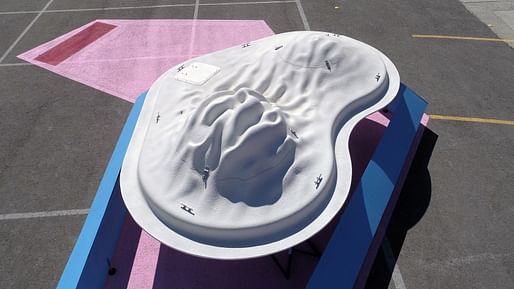
Organized by the AIA's Technology in Architectural Practice (TAP) Knowledge Community, the Innovation Awards program highlights outstanding use and implementation of innovative technologies and forward-thinking practices among architects, designers, collaborators, and clients.
For the 2019 competition, a total of six projects were selected as winners in two categories:
Category A: Holistic Design

Buoyant Ecologies Float Lab | CCA Architectural Ecologies Lab
Architect's statement: “The Float Lab builds upon three years of applied research, prototyping, and monitoring conducted by a collaborative team of architects, architecture students, marine ecologists, and composites manufacturers. As a research endeavor, the project facilitates productive feedback loops between design speculation, scientific knowledge, and advanced expertise in composites fabrication. The project began as an academic experiment seeking to expand architecture’s capacity to engage extra-disciplinary expertise and address one of the most pressing ecological challenges of our time. It has resulted in a robust multi-disciplinary partnership in which the outcomes would not be possible without the contributions of each partner. The project employs parametric modeling, file-to-factory workflows, and robotic fabrication to translate ecological performance criteria to logics of geometry, form, and material. The integrated, interdisciplinary approach streamlines the design and production processes, facilitating a direct link between empirical ecological research, digital fabrication, and material performance. A critical component of this process has been its emphasis on full-scale prototyping, which has provided important lessons in both ecological performance and fabrication limitations. The Float Lab will support the continuation of this process: attachment fittings on its underside will suspend future prototypes to further develop the wave attenuation potentials of the optimized substrate.”
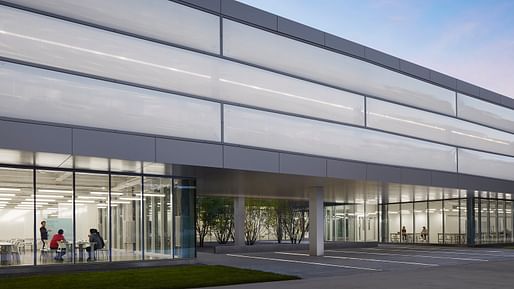
IIT Innovation Center (Ed Kaplan Family Institute for Innovation and Tech Entrepreneurship), Chicago by John Ronan Architects
Architect's statement: “The building sector is responsible for 30 percent of global energy consumption, 35 percent of CO2 emissions and half of all landfill waste—we need to find a new way to build. The idea of the dynamic facade on the IIT Innovation Center, which responds to climate in real time by modulating the amount of incoming solar energy, is to make the architecture do more so that systems can do less. The design of the Innovation Center on the Mies campus at IIT is innovative in its own right, and forward-thinking in its approach to sustainability. The second floor of the building, which cantilevers over the ground floor to provide sun shading, is enclosed in a dynamic facade of ETFE foil cushions which can vary the amount of solar energy entering the building through sophisticated pneumatics.”
Category B: Development of Design or Design-Thinking

Baxter Parametric CMU Wall, Los Angeles | Ehrlich Yanai Rhee Chaney Architects
Architect's statement: “The Baxter Parametric CMU Wall reflects our belief that good design can be transformative, regardless of the project's (or the material's) type and scale. In this case, we took a humble material and paired it up with advanced technology to give it new life. In fact, what used to be a humble material will become a dynamic feature in the project. Our curiosity to explore this material has led us to leverage a wide range of analog and digital tools and has required collaboration between many trades. Our roots in design exploration through making has also prompted us to collaborate closely with the contractor and the masons to develop and fabricate custom jigs for the construction process. It was a paradigm shifting process for all of us as we became more involved in each other's crafts and as we learned from each other. It is through this combination of collaborative attitude and curiosity that we believe how inspired environments will be made.”
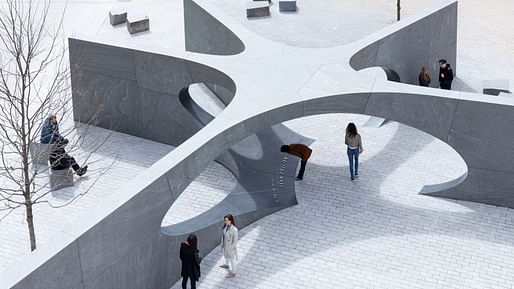
MIT Sean Collier Memorial, Boston | Höweler + Yoon Architecture
Architect's statement: “A memorial is not a commission that I ever wanted. It marks a tragedy. In the face of fear and terrorism, what can a community do? It can gather and reflect and re-affirm our values of openness and diversity. The memorial offers a space of reflection. Its curvilinear form highlights a conspicuous absence at its center. It is clear that something is missing, almost like a pantomime, defining the edges of a missing center. The central void is also a room that unifies the five other rooms formed by the buttresses. It also offers a metaphor for diversity and openness. Each stone is different and unique, and they are all necessary to work together to stand. Strength, a term used after the bombing, as in Boston Strong or Collier Strong, is here translated into a structural form: a vault. It is a beautiful way to show the interconnectedness and co-dependency of individuals relative to a community.”
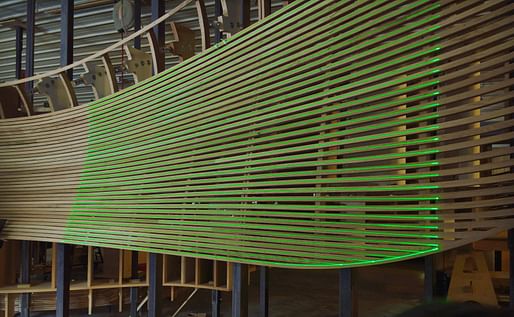
Performative Millwork: The Coca-Cola Stage at Alliance Theatre, Atlanta | Trahan Architects
Project excerpt: “About the millwork - The primary challenges of fabricating the millwork scope for this theater project were:
1. working with Matthias Pliessnig to accurately translate the material properties of hand steam-bent millwork into a digital environment
2. synthesizing the acoustic properties for spoken word theater
3. working with CW Keller to mass produce steam-bent millwork with 1/32nd tolerances and crafting a production process that minimized waste
Trahan Architects, Matthias Pliessnig, and CW Keller leveraged a series of 1:1 mockups to define a database of material behaviors, achievable curvatures, material saving jigs, and acoustic strategies. The resulting design, which synthesizes both aesthetic and acoustic properties, required a fabrication workflow which merged hand-crafted steam bending with complex 3D laser projection and laser scanning. Trahan Architects developed scripting techniques to provide layouts of over 100,000 linear feet of millwork slat centerlines to the fabricator. The result is a series of beautiful steam-bent millwork guardrails and balconies that merge handcraft with mass production. The synthesis of acoustic performance, hand-driven artistry, and sophisticated laser positioning are all carefully choreographed to execute the complex steam-bent millwork without the need for wasteful CNC molds. Delivered for $350/sq ft, the product has proven to be both economical and stunning.”
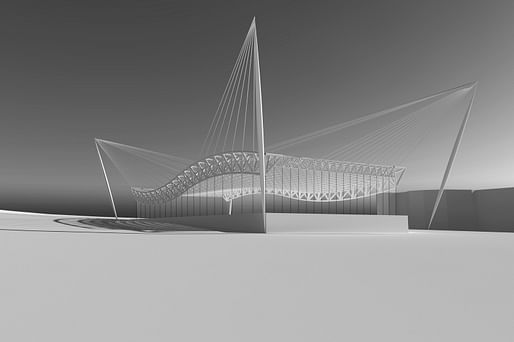
Overhaul the curriculum, not just a course | Faculty of the University of Tennessee School of Architecture
Project excerpt: “Faculty at the University of Tennessee felt that the students’ design work rarely reflected understanding of concepts from their many other technology courses. In a radical move, the faculty overhauled the entire B.Arch. technology curriculum, its sequence of courses and content. The faculty eliminated six stand-alone structures, technology, environmental, and materials courses, totaling 22 credit hours. These were replaced with a series of nine two-credit-hour half semester design/technology courses. Each of the half semester course generally aligned with the studio sequence and each containing a blended content related to climate, site, enclosure, materials, structures, building systems, design, and performance.”

Kinderspace: Architecture for Children's Development #2
Register by Thu, Jan 16, 2025
Submit by Mon, Jun 16, 2025
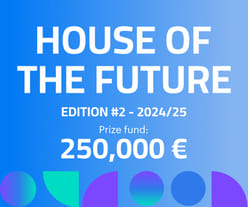
250,000 € Prize / HOUSE OF THE FUTURE 2024/25
Register by Wed, Apr 30, 2025
Submit by Mon, Jun 2, 2025
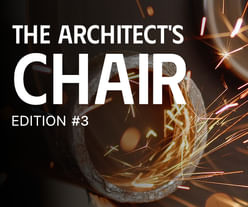
The Architect's Chair / Edition #3
Register by Wed, Jan 15, 2025
Submit by Tue, Feb 18, 2025

MICROHOME Kingspan 2024/25
Register by Thu, Feb 13, 2025
Submit by Tue, Mar 18, 2025
No Comments